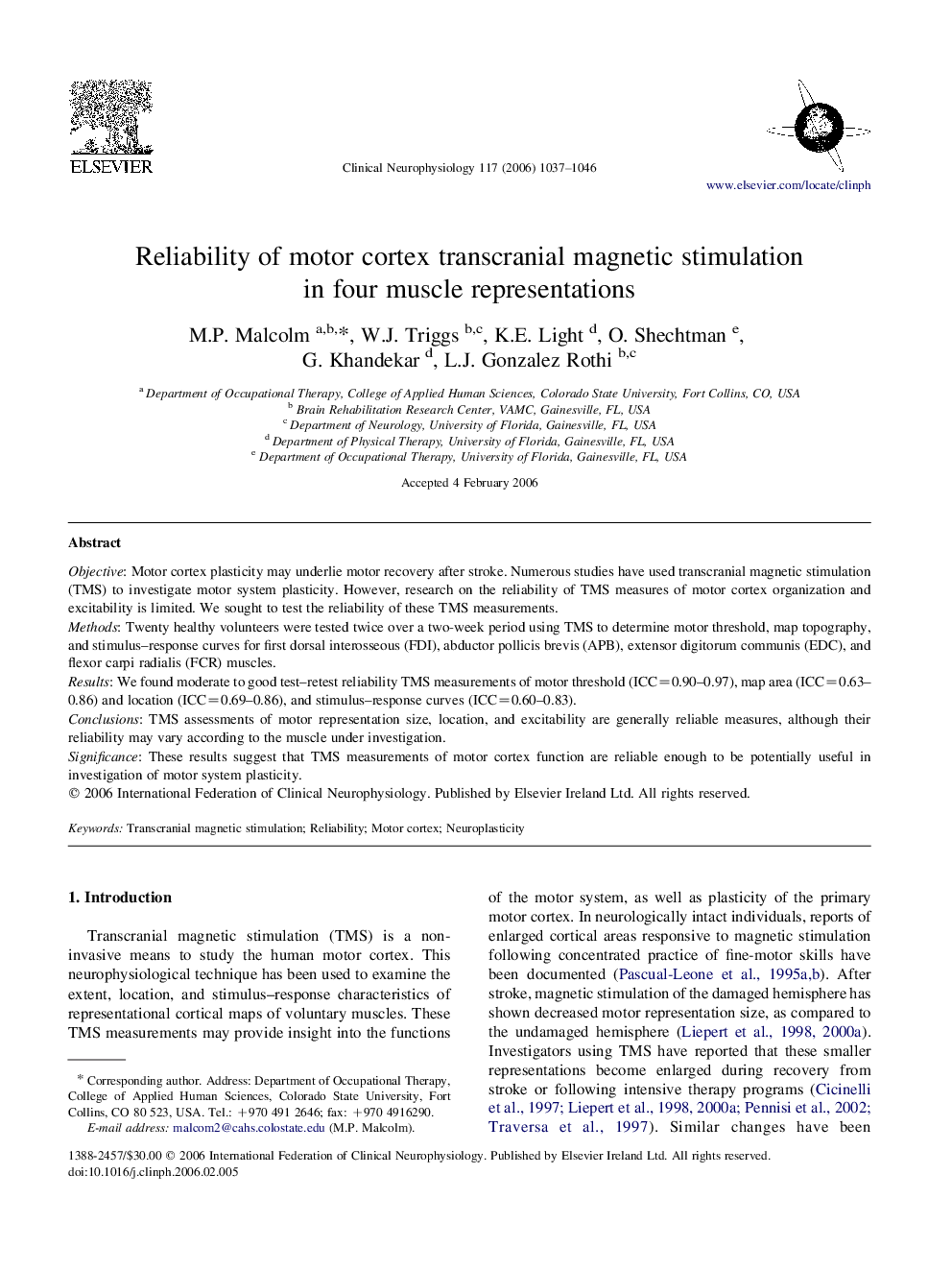| Article ID | Journal | Published Year | Pages | File Type |
|---|---|---|---|---|
| 3048636 | Clinical Neurophysiology | 2006 | 10 Pages |
ObjectiveMotor cortex plasticity may underlie motor recovery after stroke. Numerous studies have used transcranial magnetic stimulation (TMS) to investigate motor system plasticity. However, research on the reliability of TMS measures of motor cortex organization and excitability is limited. We sought to test the reliability of these TMS measurements.MethodsTwenty healthy volunteers were tested twice over a two-week period using TMS to determine motor threshold, map topography, and stimulus–response curves for first dorsal interosseous (FDI), abductor pollicis brevis (APB), extensor digitorum communis (EDC), and flexor carpi radialis (FCR) muscles.ResultsWe found moderate to good test–retest reliability TMS measurements of motor threshold (ICC=0.90–0.97), map area (ICC=0.63–0.86) and location (ICC=0.69–0.86), and stimulus–response curves (ICC=0.60–0.83).ConclusionsTMS assessments of motor representation size, location, and excitability are generally reliable measures, although their reliability may vary according to the muscle under investigation.SignificanceThese results suggest that TMS measurements of motor cortex function are reliable enough to be potentially useful in investigation of motor system plasticity.
